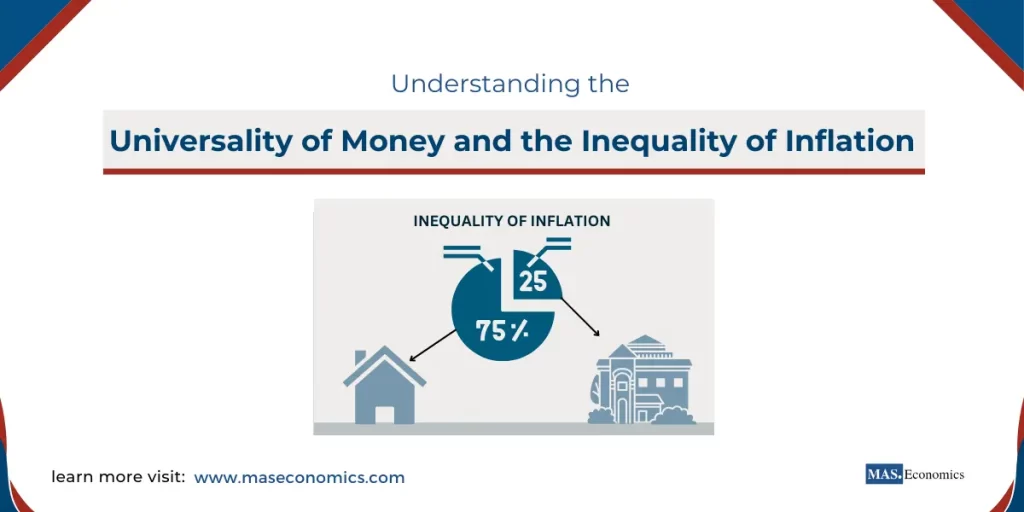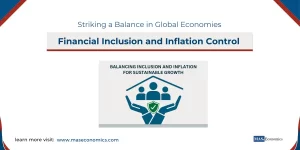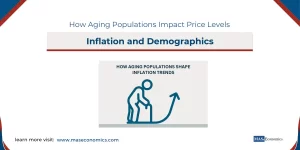Money is often perceived as a universal element across economies and cultures. Whether in bustling cities or rural communities, the Universality of Money—be it cash, credit, or digital assets—remains a constant. However, while the existence of money is universal, the impact of inflation reveals an Inequality of Inflation that affects purchasing power in markedly different ways.
Factors like income inequality, geographic location, and access to financial systems shape how inflation influences different groups. This analysis explores the varied effects of inflation across economic and social spectrums, revealing why the experience of inflation is so diverse, even when the concept of money remains the same.
Money
The essence of money is its ability to facilitate transactions. Money allows individuals to acquire goods and services from others—whether through direct purchases, credit transactions, or even informal exchanges. Historically, money has taken many forms, from commodity money like gold to modern-day digital currencies. But regardless of its form, the core function of money as a tool to obtain value remains unchanged, which speaks to the Universality of Money.
However, the purchasing power of money—the real value that it can command—plays a crucial role in understanding inflation dynamics. In an ideal economy, every person’s access to money would translate proportionally into access to goods and services. Unfortunately, the reality is far more complex. When inflation rises, purchasing power becomes unevenly distributed, disproportionately affecting those who are most vulnerable. This situation highlights the inequality of inflation and how it differentiates the experiences of individuals in varied economic contexts.
How Inflation Impacts People Differently
The Role of Income Inequality in the Inequality of Inflation
One of the most significant determinants of how inflation impacts individuals is income inequality. In theory, inflation means that prices increase across the board, but the practical impact of these price hikes depends on a person’s income and how they allocate it.
Low-Income Households
For households that spend the majority of their income on necessities like food, transportation, and rent, inflation can lead to significant challenges. When prices of basic goods increase, low-income families are forced to cut back on discretionary spending, often sacrificing their quality of life. Inflation acts as a regressive tax for such individuals, consuming a larger portion of their limited earnings. This reflects the inequality of inflation, as the burden falls disproportionately on those with fewer resources.
High-Income Households
On the other hand, high-income households typically spend a smaller percentage of their income on essential goods. This means they can more easily absorb price increases without significant impacts on their living standards. Moreover, wealthier individuals often have investments in assets like real estate, stocks, or commodities, which may actually appreciate in value during inflationary periods. This gives them a hedge against inflation, further widening the income gap and highlighting the inequality of inflation in practice.
Geographic Location
Geographic location is another critical factor that determines how inflation impacts different populations, emphasizing that the Universality of Money does not lead to a universal inflationary experience. Inflation in urban and rural areas manifests differently, largely because of variations in consumption patterns and access to essential goods.
Urban Areas
In urban areas, the cost of living is generally higher. Housing, utilities, and transportation costs are often more volatile, meaning that even moderate inflation can significantly impact urban dwellers. Additionally, people living in cities may have more access to credit and loans, which could either help them weather inflation or trap them in debt cycles if inflation spirals out of control.
Rural Areas
In rural communities, people may rely more heavily on subsistence farming and local barter systems. Inflation here might impact manufactured goods more than staple food items, depending on the region. However, rural areas often have limited access to formal banking and credit systems, which restricts their ability to mitigate inflationary impacts by leveraging financial instruments. This lack of financial resilience makes rural populations particularly vulnerable, underlining the inequality of inflation across different geographies.
Access to Financial Systems
Access to financial systems can also play a significant role in mitigating or exacerbating the effects of inflation. Formal banking, credit facilities, and digital financial services provide a crucial buffer for individuals facing rising prices. However, access to these services is not evenly distributed, especially in developing economies, thereby contributing to the inequality of inflation.
Financial Inclusion and the Universality of Money
For individuals with access to bank accounts and credit facilities, managing inflation can be relatively straightforward. Tools such as fixed deposits or interest-bearing savings accounts can help cushion the blow of inflation, even if they don’t entirely eliminate the loss in purchasing power. In contrast, individuals without access to these tools find it much harder to retain their wealth during inflationary periods.
Credit as a Safety Net
Credit systems can act as a buffer during inflation by providing short-term liquidity to cover increasing costs. However, in economies where credit is expensive or inaccessible, people have no choice but to absorb price shocks directly. This contributes to a cycle of inequality, where those without financial access become increasingly vulnerable, thus exemplifying the inequality of inflation.
Digital Financial Platforms
Recent advancements in digital finance, including mobile banking and cryptocurrencies, offer promising avenues for increasing financial inclusion. Digital wallets can help individuals save, send, and receive money, which can mitigate some of the effects of inflation. However, these technologies are not equally available everywhere, and barriers such as lack of internet access or digital literacy often prevent the most vulnerable from benefiting. This uneven access contributes to the inequality of inflation, where only some people are able to mitigate the impacts effectively.
Universality of Money and the Unique Impact of Inflation
While the Universality of Money suggests that money is a constant means of transaction across different economic contexts, the actual inequality of inflation that arises tells a different story. The ability of money to provide access to goods and services may be consistent, but inflation distorts this ability depending on the individual’s economic environment.
Purchasing Power and Universality
While money serves as a universal medium of transaction, its value—purchasing power—is heavily influenced by the broader economic environment. During periods of inflation, the purchasing power of money declines, but this decline is not uniform; it affects different populations unequally, depending on their access to economic resources, underscoring the inequality of inflation.
Examples: Unequal Effects of Inflation
Case Study: The 2022 Global Inflation Crisis
The 2022 global inflation crisis provides an excellent lens through which to view the unequal impacts of inflation. Triggered by a combination of supply chain disruptions, energy price shocks, and fiscal stimulus packages, inflation rates soared across the globe. However, the impact varied significantly:
In high-income countries like the United States, consumers faced higher prices, particularly for gasoline and food. However, government interventions such as subsidies and direct payments helped mitigate the worst effects, particularly for low-income households, emphasizing that policy can sometimes cushion the inequality of inflation.
In contrast, in many developing nations, inflation meant a drastic increase in the cost of imported goods—everything from fuel to food staples. With limited social safety nets, the poorest households bore the brunt of the crisis, experiencing a severe decline in living standards, which further highlighted the inequality of inflation across different economic contexts.
Historical Context
The hyperinflation crisis in Zimbabwe in the late 2000s serves as another stark example of how inflation does not affect everyone equally, regardless of the Universality of Money. During this period, the Zimbabwean government printed excessive amounts of money to pay off national debts, leading to astronomical inflation rates that made the national currency nearly worthless.
Rural Populations: People in rural areas, who could rely on barter systems and subsistence farming, were relatively insulated from the worst effects, although their ability to purchase manufactured goods was severely restricted.
Urban Populations: In contrast, urban dwellers, who relied heavily on the formal currency for all aspects of daily life, found themselves without purchasing power, leading to severe shortages of basic necessities like food and medicine. This illustrates the inequality of inflation, where different segments of the population face different levels of adversity.
Inflation as an Unequal Experience
The Universality of Money does not mean that inflation is experienced universally. Instead, inflation amplifies existing inequalities, with its effects being felt differently across various social, economic, and geographic lines. Factors such as income inequality, access to financial services, and geographic location play critical roles in determining who is most affected and how severe the impact will be, thereby reinforcing the inequality of inflation.
Conclusion
Inflation reaches beyond basic economic metrics, intertwining with social and economic inequality in significant ways. While money acts as a universal medium, the effects of inflation vary widely, influenced by income levels, geographic location, and access to financial resources. Recognizing both the Universality of Money and the Inequality of Inflation underscores the importance of policies that go beyond merely controlling inflation to actively address its disproportionate impact on vulnerable groups.
FAQs:
How does inflation affect people with different income levels?
Inflation impacts low- and high-income households differently. Low-income households, who spend most of their income on essentials like food and rent, feel the effects more acutely as price increases reduce their purchasing power significantly. High-income households, on the other hand, often have investments that can appreciate in inflationary periods, allowing them to offset inflation’s impact and maintain their standard of living.
Why does inflation affect people in urban and rural areas differently?
Urban areas tend to have higher living costs, and inflation makes essentials like housing and transportation even more expensive. City dwellers may have more access to credit, but rising prices can still strain budgets. In rural areas, while residents may depend more on self-sustenance, inflation can raise the cost of manufactured goods, and limited financial resources make it harder for rural residents to cope.
Why is inflation experienced unequally despite the universality of money?
While money is a universal tool for transactions, inflation affects its value differently across income levels, locations, and financial access. Higher-income households and those with investment options can often protect their wealth, while low-income and financially underserved communities suffer from a loss in purchasing power, emphasizing the inequality of inflation.
Can digital financial tools help reduce the inequality of inflation?
Digital financial tools, such as mobile banking and cryptocurrencies, offer potential ways to help individuals in underserved communities save, transfer, and receive money, which could reduce some inflationary effects. However, barriers like limited internet access or digital literacy prevent widespread adoption, maintaining unequal inflation experiences.
What policies can address the inequality of inflation?
Policies that address inequality in inflation include targeted subsidies, social safety nets, and expanding financial access. By implementing policies that help low-income and vulnerable groups manage inflation’s impact—such as food subsidies or affordable credit options—governments can create more balanced inflationary experiences across economic classes.
Thanks for reading! Share this with friends and spread the knowledge if you found it helpful.
Happy learning with MASEconomics




